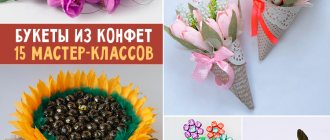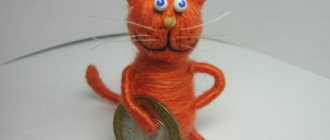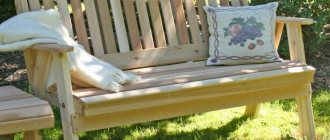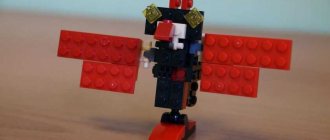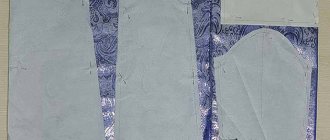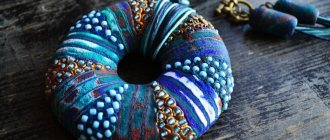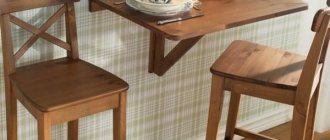What you need to make a kokoshnik
Before starting work, you need to collect all the necessary materials and tools, prepare your workplace so that the creative process brings good results and joy.
First of all, you need to decide on the basis. It could be from:
- cardboard (it’s the easiest to find; it’s easy and quick to work with; suitable for one-time use);
- plastic (such a kokoshnik will not wrinkle and will last a long time; for work you will need hot glue and a good cutting tool);
- wire (it is used to make intricately shaped frames, which are then covered with fabric; you need to be skilled in working with pliers and round nose pliers);
- thick paper (the simplest option is whatman paper, wallpaper).
What fabric is better to use
The kokoshnik is a festive, elegant accessory, so only the best fabrics have long been selected for it. Today it is possible to make a Russian kokoshnik with your own hands from such high-quality and luxurious fabrics as:
- velvet;
- atlas;
- brocade;
- taffeta;
- organza.
Delicate crepe or cambric can also be useful if richly decorated. It is better to choose plain options or fabric with a jacquard pattern.
DIY Russian folk shirt for a boy:
We start sewing from the sleeves. We attach a gusset to the edge of the sleeve.
Now we attach the sleeve with a stitched gusset to the main part of the shirt and sew it on by machine. To prevent the fabric from moving out of the sleeve, we first secure it with needles or sew it with a “forward needle” seam.
We also sew the side part of the main part.
We bend the edges of the sleeves and the bottom of the shirt.
Iron and stitch.
The braid is almost ready. It remains to process the neck and clasp on the left side. This is a small, but troublesome and delicate job.
Shirt neck
Let's start with the clasp. The length of the fastener is 15 cm. To process it, cut out two rectangles. One is 20 x 5.5 cm. The second is wider 20 x 10 cm.
We sew a narrow strip on the left side (the left side if you look at the photo).
- We wrap it inside the shirt.
We sew a wide strip to the right edge of the neckline (to the right, if you look at the photo. If you put the shirt on yourself, this will be the left side). The linden will be attached to it.
We fold the wide strip in half and wrap it inside the shirt.
We secure all the parts with an external seam.
Now let's process the neck - the stand. Cut out a piece 8 x 40 cm. Fold the edges 1 cm and iron them.
Fold it in half and iron it again.
Using a hand stitch “forward with a needle” we sew the stand to the neck.
- Sew linden onto the inside of the fastener.
Let's stitch it on the machine. The stand-up collar for a shirt in the Russian style is ready. At this stage, the braid looks like this. All that remains is to decorate the shirt with a ribbon with a Russian pattern. If there are any unevenness, the tape will hide it.
For the belt, cut out a piece 8 x 90 cm. Combine it with a wide ribbon. Let's stitch. My belt is short because it fastens with a hook. If you tie it, make it at least 120 cm. The result should be a Russian folk shirt, a blouse for a boy, sewn with your own hands.
Source: https://novorozhdennyj.ru/shite-dlya-detej/kosovorotka-dlya-malchika-svoimi-rukami/
How to make a regular kokoshnik
When starting work for the first time, it is best to make a kokoshnik with your own hands from cardboard. This material is available in abundance at hand; there is no fear of ruining it with inept cutting.
To simplify the work, it is better to print ready-made patterns. But if the shape of the headdress is specific, then you will have to draw the sketch manually.
The step-by-step instructions look like this:
- Mark a template on paper (any regular, graph paper or newspaper).
- Transfer it to cardboard and cut it out.
- Using the same stencil, cut out two patterns from the selected fabric with seam allowances.
- Sew two fabric blanks, turn them face out; insert a piece of cardboard inside.
- Cut out a cardboard rim to secure the kokoshnik and cover it with fabric.
- Sew (or otherwise attach) the kokoshnik to the headband at a ninety-degree angle.
- If necessary, sew ties (braid or ribbon) for a more secure fit on the head.
- Add any decorations to your taste.
Master class on DIY sewing
For a themed party and folk festival, you can simply buy a sundress. True, even a novice needlewoman can sew it herself. To make a Russian sundress with your own hands, you just need to take the measurements correctly, create a pattern and strictly follow the instructions. The technology for sewing an oblique and straight model will be slightly different, but in any case it does not cause any difficulties.
Children's oblique
It is not difficult to sew a Russian folk sundress for a girl. Both silk, wool and cotton materials can be used in its manufacture. The product can also be additionally equipped with a lining. In addition, you will need the following materials:
- tapes, the width of which varies between 3.5 - 4 cm. They will be used to trim the top and straps;
- buttons equipped with a kind of stem. You will need about 20 of them;
- decorative lace with which the fasteners will be finished.
At the initial stage of creating a sundress for a girl, you should take measurements. The first step is to determine the height from the ankle to the armpit. This length is considered optimal for a children's outfit. If you make it a little longer, your legs will get tangled in the hem. You should also find out your chest circumference. To determine the width of the hem, just multiply this parameter by 3.
The pattern of a Russian sundress is made according to a simple pattern. Initially, you need to draw a trapezoid on a sheet of paper with a height equal to the length of the future outfit. The top and bottom correspond to the volume of the chest and the width of the bottom. The most convenient way is to fold the paper in half and divide all values by 2.
Allowances of approximately 1.5 cm are made around the perimeter. The resulting parts are cut out and applied to the fabric ironed in advance.
After preparing the pattern, all parts are cut out. One of them acts as the front, and the second acts as the back. These elements must be sewn together. At the same time, an indentation is left on one of the sides to create a fastener. For this purpose, buttons or zippers will be used.
After making the main part, you need to sew in a lock, secure the straps and decorate the top and bottom of the product with ribbons. Buttons are sewn along the entire length of the front part. In order to imitate a fastener, loops are also created from the cord. The finished wardrobe item is further decorated. For this purpose, satin ribbons, beads or embroidery can be used.
Female straight
There is nothing easier than sewing a straight-cut Russian sundress. When creating it, you don’t even need a pattern. This option is ideal for beginner craftswomen. The size of the canvas in this case directly depends on the width of the hem. Its parameters should be greater than the volume of the chest. In addition, the length of the future outfit is taken into account.
A canvas is cut out of the fabric, one of the sides of which is equal to the length of the future product, and the second corresponds to the width of its lower part. To determine this parameter, you just need to multiply the chest volume by 2. You should also leave small allowances.
The resulting part should be sewn along the side line. The width of the top is reduced by draping and should correspond to the circumference of the chest. The folds are fixed by machine stitching or by using an elastic band.
After finishing the edges, all that remains is to attach the straps and trim the hem. When a Russian folk sundress has already been created with your own hands, all that remains is to decorate it with suitable decor. You can choose it based on personal preferences.
Cardboard kokoshnik on a finished rim
If you have an old unnecessary children's headband or hoop at home, you can make a kokoshnik with your own hands from cardboard in a couple of hours.
Note!
DIY gifts for February 23rd - a large selection of ideas for creating unusual gifts for Defender of the Fatherland Day
- What to give a 2-year-old boy - a list of the best options for an interesting and useful gift (120 photo ideas)
- Papier-mâché - TOP 120 photo reviews of original products. Detailed instructions for beginners on creating beautiful crafts
How? The master class below will help you figure it out.
- Wrap the headband with a satin ribbon, and glue the ends with glue from a gun.
- Draw a template of the planned kokoshnik on paper, draw the inner line along the drawn rim.
- Transfer the sketch onto cardboard and cut it out.
- Trace the cardboard blank onto the fabric twice (you can fold the fabric in half), taking into account seam allowances, and cut it out.
- Sew both fabric blanks along the outer contour, turning them inside out.
- Place a cardboard base inside and sew the bottom edge with a hidden seam so that the threads and places where they are stretched are not visible.
- If necessary, iron the workpiece.
- Carefully sew the base of the kokoshnik to the prepared headband using a blind stitch.
- Decorate with ribbons, rhinestones, beads.
The headdress is ready!
Making a folk costume for a play doll with your own hands. Master Class
Master Class. Creating a simplified version of the (Russian) folk costume for a play doll with your own hands 35-55cm. Lots of letters and photos. Good day to all readers! I often sew for dolls, especially kindergarten ones. One of the latest “orders” puzzled me a little at first. — We need a doll in a red folk costume with a kokoshnik for the corner. Well, sew it from some scraps.
Of course, I couldn’t resist and said something about a bear with a balalaika))) A bear, they said, is not necessary, but a red dress with a kokoshnik is necessary.
It is clear that real costumes for a 45-50cm folk doll are not sewn from “pieces”, and the kokoshnik alone can be embroidered for months... Therefore, the task had to be simplified and made as cheap as possible. Budget - 0 rubles 00 kopecks.
I was given the future “Russian beauty”. A sturdy Soviet doll, about 50-55cm tall, with a wild hairstyle and no underwear. Linen is not held in high esteem in our garden at all; even when put on a doll, it disappears in the most mysterious way exactly after a week. I checked)))
To begin with, the doll was washed, hair straightened and curled. The most ordinary human ones from a well-known network company)) I love them (these curlers) selflessly, honestly.
I photographed the doll next to my Italian (45cm) just out of curiosity and as a keepsake.
Our folk costume will consist of a lower dress (a white shirt with embroidery and frills) and a red upper dress (as ordered)). We make the kokoshnik last.
We start with the undershirt. This will be a white dress cut at the waist.
I most often draw patterns on paper first. The most important detail is the top of the shirt (from neck to waist). First, draw separately 1/2 of the front part and 1/2 of the back part. Then we fold the parts of the shelf and back to each other with shoulder seams and combine them into one common part. The result was half the top of the finished product.
Mdams... I'm sorry, but I made the pattern “disposable” on unnecessary paper)))
Then we put this detail on the fabric and trace it, creating one single element on the fabric.
The part on the right was already outlined, then the paper pattern was turned over and the left part was outlined in a mirror image. My pencil is disappearing, so we don’t pay attention to the extra lines (on the left in the photo)).
The part was cut out. The clasp will be at the back. Let's try it on a doll. The piece is one piece, we will sew only the side seams. Not now!!!
We adjust the fit on the figure before stitching. We're not sewing anything yet! Now let's do the sleeves. In a lightweight version, these are just rectangles. We calculate the dimensions “according to the doll”. We need sleeve length and width taking into account gathers. You can mark it on a ruler and cut it out.
To preliminary evaluate the result, we put machine stitches along the top of each sleeve part to create gathers. We tighten the stitches and apply the sleeve blanks to the dress blank.
If everything suits you, you can lay finishing stitches along the sleeve parts at an arbitrary height and in an arbitrary quantity. The bottom of the sleeve is immediately decorated - lace, elastic... whatever your imagination dictates. The sleeves are stitched to the armholes, and the cut is processed. Then we combine and stitch the side seam of the shirt and sleeve with one seam. We process the cut. You can design the neckline. The easiest way is a stand-up collar made of lace. We make the skirt in the same way as the sleeves - we measure, cut out a rectangle, decorate the bottom (ruffles, lace, ruffles), and process the side sections. We apply it to the doll.
Adjust the length. This needs to be done right now, because... We have already processed the bottom of the skirt. We connect the lower and upper parts of our white (bottom) dress.
Now we process the fastener. She's behind. The options are different. You can make the top part with buttons, and half of the skirt (starting from the bottom edge, stitch it into a single piece).
The red part of the outfit. We choose the color scheme of the decorations. In a simplified version, all skirt decorations can be reduced to jacquard braid and a couple of decorative stitches. We apply available (and more or less matching in color scheme) ribbons and ribbons.
We make the final choice. Decorative stitches (if you don’t sew often and are not sure of the result) are best practiced on pieces of fabric. In our case, the fabric is a bit thin, so we sew on paper. The training results look something like this:
To simplify the task as much as possible, I decided to abandon the traditional design of an outer dress in the form of a sundress, replacing it with a skirt. It's easier and faster to sew a skirt. On a doll of this size it will look quite “popular”. We try on an almost finished skirt with processed bottom and side sections.
Adjust the length. Again “cleanly”, because... The bottom edge has already been processed. We make the necessary folds/gatherings for a good fit. Sew a belt to the top of the skirt. I took ready-made bias tape in a matching color. I made the skirt “with a wrap”, i.e. it wraps around the waist (under the bust) and is tied with a bow. To form “strings,” the belt is made slightly longer than the fabric. For some reason I didn’t take a photo of the finished skirt. It will be lower on the doll.
Let's move on to the kokoshnik.
The shape is drawn randomly by hand on paper, cut out, tried on the doll's head, put aside, a new one is drawn... and so on until the manufacturer likes the result))) I made about 5 options, settled on the least cumbersome and easiest to implement. (I am aware that the headdress of girls (and judging by the body, our model is a girl of about 7 years old) looked different in Rus'))) but they made it clear to me that the administration of the kindergarten does not care about this historical fact even once. That's why we have a kokoshnik)))
Using the pattern approved by us, we cut out blanks from the main fabric (from which the dress was sewn). Quantity of 2 pieces.
You can force this structure to keep its shape in different ways. The simplest thing is thick fabric with an adhesive base (dublerin). The interlining is too thin, we don't take it. I duplicated only the part of the kokoshnik that will be on the outside, the back part without reinforcement. Then we draw a pattern on the “front” part of our headdress. I didn’t complicate matters by pushing the element under the embroidery machine. Therefore, I simply drew the trinket by hand with disappearing chalk and embroidered it with metallic threads on a regular sewing machine using one of the thick decorative stitches.
We are not afraid of the abundance of chalk on the front side of the product. The chalk will disappear in 24 hours, it is special))) The most difficult thing is to connect the two parts of our kokoshnik. Ideally, the lower part should be slightly smaller than the upper. One of the options for achieving this result is to decate the lower part after stitching. Stitch with right sides facing inward. We trim the edges to a reasonable height and cut off the excess in the seams. We turn it inside out and iron it with an iron and steam (yes, this is decating at home, you can also sprinkle it with some water)) The unduplicated lower part of the kokoshnik shrinks and we get the very bend we need. Naturally, this will only work with new, all-natural, thin cotton fabric. Synthetics almost never shrink. We process the bottom cut with the same bias tape that was used to complete the red skirt. The kokoshnik is almost ready. You can embroider it with beads. But the fastest way is to stick rhinestones)))
We dress up the doll.
“Red folk costume with kokoshnik” is ready. We pat ourselves on the head))) We completed the main task - we sewed a simple, inexpensive outfit as part of the announced order. Looking ahead, I will say that the administration was very pleased, promised a monument and asked to sew the same one “from leftovers” for another group. Having heard that everything was done exclusively with personal funds, I lowered my eyes in disappointment...
Our kindergarten is municipal, unpretentious, without fees “for European-quality repairs and European-quality furniture,” we and our children sincerely love it and therefore, pretend that the following photo did not shock you)))
I hope that this treatise will inspire you for larger-scale projects and give you some ideas for implementation in completely different products.
Many thanks to everyone who made it to the end or at least looked at the pictures)))
You can find clothing patterns for dolls in our section on Babies
How to decorate a homemade kokoshnik
There is often a situation when in dreams one’s own creativity is seen as exceptional and unique, on the verge of magic. But in practice, it is difficult to understand how to decorate a kokoshnik. Photos of the kokoshnik, made with your own hands by experienced craftswomen and costume designers, will help you come up with your own unique work.
You can also focus on drawings and paintings from different provinces and regions. Each locality, each class and time had its own characteristics. Historical books describing the life of our ancestors can be a valuable help.
Illustrated collections of fairy tales provide rich material for copying. Princesses and simple peasant girls are often decorated with exquisite headdresses.
Magic kokoshnik of the Snow Maiden
Cardboard is not suitable for the image of the Snow Maiden, Snowflake, or Snow Queen. The kokoshnik should be created translucent, as if glowing from frost and frost. Here you need to use plastic, transparent openwork fabrics (for example, tulle, lace, tulle), satin ribbons.
A denser, but no less beautiful fabric will be required for the back. It can be satin or satin. You will need a sewing machine, scissors, cardboard for a template, a glue gun, 30 cm elastic bands, and decorations.
Note!
- Kinusaiga technique - TOP-140 photos of the best ways to create crafts using the Kinusaiga technique with your own hands + instructions for beginners
- Do-it-yourself passe-partout - a master class with step-by-step do-it-yourself schemes. Making tips + photos of the best examples
- Decoupage with napkins: TOP-150 photos of ways to decorate with napkins. Simple instructions for beginners at home
Types of sundresses
There are several main varieties.
Sundress in the form of a tunic with oblique wedges
This product model will be the oldest. It existed until the end of the 18th century and was called “shushun” or “sayan”. The main feature of this product was its solid front panel.
Complementing the image with a kokoshnik
Its most ancient model - a blind sundress in the form of a tunic - was made from one piece of material folded in half, forming both parts of the product. There were wide wedges on the sides.
Swing type product
This sundress was made from three pieces of material - two shelves and one back. At the hem of the product, two oblique short wedges were inserted into its side seams; this gave a visual expansion to the dress. The sundress was fastened with buttons at the front. The straps were sewn wide or narrow, cut out together with the back from one piece of fabric.
Round sundress model
The most common and widely used in almost all of Rus' in the 19th century was the Moscow type of product. It is distinguished by its tenderness and airiness when walking, although it seems like a weighty suit.
Slanted dress
Sundress with bodice
This will be a subtype of a round sundress with only a bodice. It was made of two parts: a lush gathered bottom and a bodice that tightly covered the chest. It was fastened in the middle of the chest with buttons or loops. Such dresses were popular in central Rus'. This suit is more suitable for girls with large breasts; the bodice will tightly hold the bust and emphasize its shape. It is necessary to sew an elastic band under the chest line so that the fabric does not put pressure on the body.
A Russian women's shirt under a sundress is made according to the pattern presented in Figure 2.
It was believed that the more magnificent and longer the costume, the more charming and innocent its owner.
You might be interested in everything about manual sewing machines for leather sewing
How to make a plastic kokoshnik
- Develop and cut out a craft template (ready-made patterns for beginners are attached below).
- Cut several layers of tulle along it (how many depends on its density).
- Sew the tulle on a machine, laying two rows of stitches; the first one is slightly at a distance from the plastic, the second one is close to it.
- Unscrew the fabric cover and place it on the base.
- Develop a decoration design on whatman paper or other white paper; transfer him to the kokoshnik.
- Glue the design with gold (or other shiny) glue.
- Decorate to taste.
- Cut out three parts from the satin (the pattern is shown in pictures of the kokoshnik with your own hands). Cut the same parts from the lining material.
- Sew them together to form half a hat.
- Sew elastic at the bottom.
- Cut and sew two satin ribbons for ties and sew them on the bottom.
- Sew the cap to the bottom edge of the kokoshnik.
- If desired, glue the mesh in front and earrings on the sides.
- The kokoshnik is done!
Women's Russian folk costume
The pattern of a Russian folk costume for girls is quite simple. A sundress sewn on the basis of a rectangle, gathered along the chest line with an elastic band. Straps are sewn to it. And a loose-fitting blouse.
Sundress
To sew it, you need to take 3 measurements: Bust height, Bust circumference and Sundress length from the chest line. We will cut immediately on the cut.
- Fold the fabric in half.
- Along the fold line, set aside the length + 2 allowances of 6-8 cm.
- Set aside the desired width of the product from the fold.
- Draw a line up parallel to the fold line.
- Cut out.
You will need two such parts - for the back and the front. Separately, you need to cut 2 straps with a length of Br x 2 + allowance and a width of 9 cm (by bending and hemming them, the width will be 4 cm).
To make the sundress more magnificent, cut out 4 trapezoidal parts. These will be the side inserts.
- Sew back + side insert + side insert + front + side insert + side insert + back together.
- Fold the bottom and stitch.
- Fold the top under and stitch, leaving room for the elastic to be threaded, if any.
- Fold the straps in half lengthwise, sew them together and turn them onto the face.
- Make tucks along the top or thread an elastic band into the drawstring.
- Sew on the straps.
Finish with lace, ribbon, braid if necessary.
Blouse
The blouse pattern is in Burda magazine for 2003. Number 10, model 151.
Or build according to the drawing below.
This method can also be used to sew a Russian folk costume for a girl. The sundress can also be trapezoidal. In this case, ¼ Og + allowance is set aside from the fold line along the upper edge. The construction is further visible in the diagram.
Kokoshnik in half an hour for kindergarten
If you urgently need to make decorations for the entire fair half of the kindergarten group, even simple options with fabrics and sewing will not work. We need a folk kokoshnik, which any mother or teacher can glue together with her own hands in half an hour.
The work will require:
- cardboard;
- self-adhesive paper of different colors;
- scotch;
- wide elastic band;
- optional - narrow satin ribbon or strips of paper.
To make a kokoshnik, you should:
- print or draw a template;
- cut out a kokoshnik blank along it on colored cardboard;
- cut out petals, flowers, circles and droplets from self-adhesive paper - motifs of folk ornaments;
- glue them to the workpiece;
- laminate with tape;
- sew or glue an elastic band onto double-sided tape;
- Additionally, you can decorate the sides of the kokoshnik with ribbons or paper strips.
Fabric for work
Materials for work must be selected very carefully.
The fabric should be natural and multi-colored for sundresses, light for women’s shirts and plain for trousers, with a fine pattern for guys’ shirts.
You may be interested in: Methods for sewing T-shirts one size smaller
If a woman cannot decide on the choice of pattern, then a single-color material is taken, onto which a wide ribbon with a floral pattern is sewn.
The best materials are silk or chintz; satin fabric is also allowed. Sometimes thin lace is used for decoration; it looks quite beautiful with the red color of the suit. The shirt is usually made of cotton material; it should allow air to pass through well.
Pattern of a Russian folk sundress
Kokoshnik made from simple materials
Another option for a budget kokoshnik, which is suitable for anyone who needs to make a lot of them urgently. To work, you will need old wallpaper (left over from renovation) with a suitable pattern.
Floral ornaments, flowers, curls, monograms look great on kokoshniks. Using a pre-cut cardboard template, you can cut many blanks from wallpaper, because the pattern on them is often repeated.
The only difficulty is to ensure that the design is always cut out the same way. Make a headband from the remnants of wallpaper and glue a kokoshnik to it.
You can decorate with glitter, bright markers, sequins, and ribbons. A simple decoration option is New Year’s “rain,” but it is not suitable for all holidays.
Knitted kokoshnik
And for needlewomen who, on the contrary, have enough time to prepare, we can offer patterns for crocheted kokoshniks. As a rule, they are simple. The yarn should be thin, cotton, lint-free and with well-fixed dye.
Having knitted the openwork part, you need to wrap the rim or hoop with the remaining yarn. Starch the kokoshnik tightly or soak it in PVA glue and dry it. Glue the headband and add decorations to your taste.
Using the same patterns, you can create a whole gallery of holiday dresses for all occasions. Change only the yarn color and decor. Snowflakes and sparkling rhinestones for winter, flower bouquets, butterflies, dragonflies for summer.
A kokoshnik for an autumn celebration can be covered with decorative rowan berries, acorns, and leaves of different colors and shapes. For spring you can prepare tender fresh herbs, primroses, small birds, ladybugs.
DIY braid for a boy in one evening
If you and your son were invited to a holiday in Russian folk style, then you will need a themed outfit. In order not to bother searching for a whole suit, you can get by with one element. In this article you will learn how to sew a shirt for a boy with your own hands.
In simple terms, this is a simple Russian shirt. Only her collar is slanted, and not straight, like ordinary shirts. Such clothing appeared in the fifteenth century.
The slit with the clasp on the collar was usually on the left side, but sometimes could be located on the right.
The cut of the blouse was located precisely obliquely, so that during labor work the pectoral cross would not fall out from under the clothes.
Selecting a scheme
For example, let’s take a seven-year-old boy and sew a shirt for him. As a basis, you can take the pattern of a blouse for an adult man. We take the child’s sizes, replace them with the sizes of an adult shirt and get this diagram:
A Russian folk shirt can be sewn quite quickly using this pattern. Even if you rarely sit down at a sewing machine or have never tried to sew, you can still succeed. It will take you approximately five hours to complete the entire work.
Don’t be alarmed by the amount of time you spend working – you can sew a blouse in two (maximum three) evenings.
We adjust the pattern to the desired size. To do this, you need to write down the measurements from the resulting diagram in the second photo like this:
- shirt width – 38 cm + 2 cm for seams;
- sleeve length – 34 cm + 8 cm for hem;
- shirt length – 50 cm + 8 cm for hem;
- neck – 32 cm + 2 cm for seams.
Materials for sewing a shirt:
- fabric: satin, linen or cotton - 1 x 1.2 m;
- decorative braid - 1.10 m wide and 1.10 m - narrow;
- Velcro fastener - 10 cm;
- threads matching the color;
- sewing supplies: scissors, seam ripper, ruler, pins and so on.
The pattern is so simple that it can be done directly on the fabric. But as a beginner, it’s better for you to first draw it on special graph paper (see third photo) or on newspaper.
The shirt is cut without shoulder seams, so even a child can cope with the task. As a result, you will get a rectangle with a cutout in the center (fourth photo).
By the way! You probably went through something like this in labor classes at school:
After cutting, you will have: the main part with a cutout in the middle, two sleeves, two gussets.
Let's start stitching
First of all, we sew the sleeves. Sew a gusset to the edge of the sleeve. Now attach the sleeve with the gusset to the main part of the shirt and machine stitch it. To prevent the fabric from moving, secure the sleeve with needles.
Read this: Straight dress: the easiest sewing options
Now fold the shirt so as to sew the sleeve and gusset. Next, sew the side of the shirt. Then sew the second sleeve using the same pattern. Do not forget to process the seams: you can do it manually, or you can use an overlocker.
Now you need to bend the edges of the sleeves and the bottom of the base of the future shirt. Run the iron over the folded parts and stitch them. For more detailed instructions, watch this video:
Making the neck and clasp
You have a finished shirt, but you still need to work on the neckline and clasp. The work is troublesome, but small.
First make the clasp. Its length is 15 cm. To process the clasp, cut out two rectangles:
- first - 20 x 5.5 cm;
- the second (slightly wider) - 20 x 10 cm.
Sew a narrow strip to the left edge of the neckline and fold it inside the shirt. A wide strip should be sewn on the right side of the neckline. When the blouse is put on the child’s body, the wide side will be on the left side - Velcro will be attached to it.
Fold the wide strip in half and wrap it inside the shirt. Now secure all the parts with the outer seam. Now you can do the neckline. Cut out a piece measuring 8 x 40 cm, fold the edges in by a centimeter and iron them. Fold it in half and go over it with the iron again.
Sew the neckline to the neckline using a hand stitch and then machine stitch it. So the stand-up collar in the Russian folk style is ready! Now all that remains is to decorate our kosovorotka with a ribbon with a native Russian pattern. It will not only decorate clothes, but will also hide irregularities if they happen by chance.
Video on the topic of the article
- Watch also video lessons on the topic:
Source: https://knittochka.ru/shityo/kosovorotka-dlya-malchika-svoimi-rukami.html


